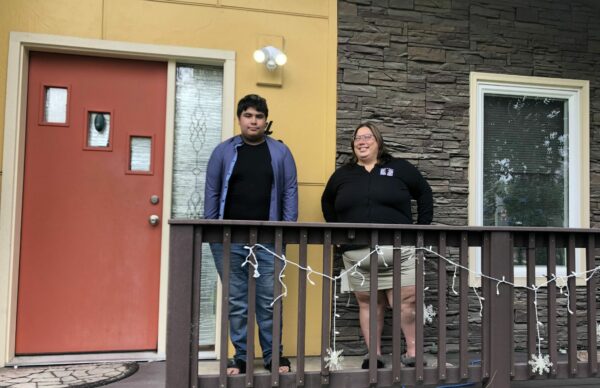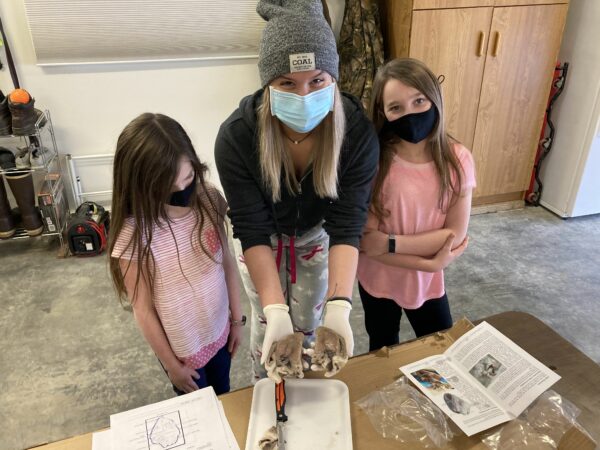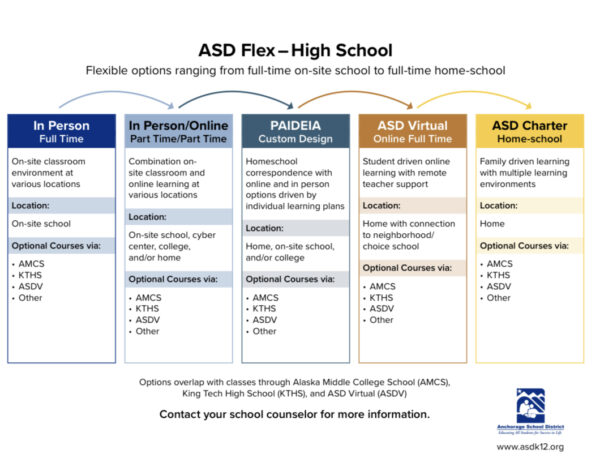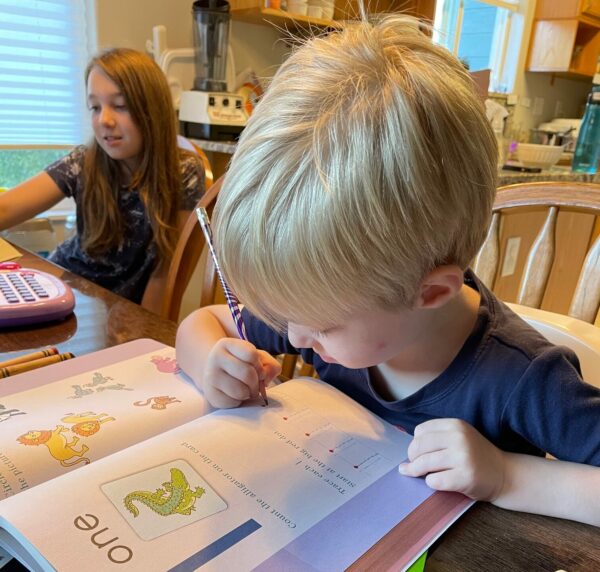
Tasha Hotch has always been a neighborhood mom, and a strong supporter of public schools.
“Sometimes I would volunteer in the classroom … or the office, or at picture day,” Hotch said. “The students know who you are, you’re another adult that they trust, and I just absolutely loved it.”
The longtime Mountain View resident even ran for the Anchorage School District School Board in 2017 and 2018.
But, as her own son Patrick progressed through school in the district, Hotch noticed he was struggling — being pulled into special classes and getting failing grades.
By the time he got to his freshman year, Hotch worried Patrick wasn’t going to graduate if something didn’t change soon. She asked to put her son in an alternative program, but the school said no.
“The response was kind of, ‘You’re being premature in taking that course of action’,” said Hotch. “And that was really frustrating to me. And I went, ‘Well, we’re not going to do this next year.’”
But then the pandemic came, during spring break of Patrick’s freshman year, and all of his classes moved online.
Suddenly, the entire district was put in an alternative program. It was a bumpy transition, but Hotch said Patrick began to thrive. Instead of not being on track to graduate at all, he’s on track to graduate a year early.
Now a rising junior, Patrick plans to stay out of the traditional school system and take an even more individualized approach with homeschooling during the upcoming school year, which starts next week.
Like the Hotch’s, many families nationwide experienced a brand-new schooling format when the pandemic shut down in-person learning. The number of students enrolled in homeschool programs across the country doubled, according to a survey by the U.S. Census Bureau.
And Alaska had the largest increase in homeschool enrollment, from 9.6% of households to 27.5% during the data collection period.

For some families, homeschooling was a short-term solution to the unpredictability of in-person learning and unfamiliarity of virtual instruction. Some of them hated it, and are eager to return to classrooms.
But for others, like the Hotch’s, being thrust into a more flexible education option led to unexpected success. And they want to continue.
“Cafeteria-style education really is the future,” said Jessica Parker, principal at Family Partnership Charter School, a homeschool program in ASD. “Parents like being in the driver’s seat of choosing what they think is best for their child.”
Parker said her program doubled in size last year, reaching capacity at 1,500 students. She had to turn away 800 families.
This year, Parker said about 20% of families decided not to continue with Family Partnership for a number of reasons. But they were easily replaced by other people eager to get in.
“When we opened our doors this morning, there were parents waiting in a line to get in and turn in their enrollment application,” Parker said.
Parker expects the program will reach capacity again within the first week of registration.
ASD Deputy Superintendent Mark Stock said families are reaching out to learn more about what school options are available for the upcoming school year, too.
“What’s interesting with the pandemic is it literally put every student and family into some form of a hybrid or online learning format,” Stock said. “Suddenly, it was a necessity, and now they’re aware. Now they’re asking.”
The district is sending messaging to families about it’s different offerings, many of which already existed but people were unfamiliar with, said Stock. ASD is calling it ASD Flex.

Enrollment is constantly fluctuating so the district won’t know exactly where families have landed until the first day of school gets closer, Stock said.
The district is expecting about 75% of students who left to other programs will return for in-person learning this fall. Enrollment numbers are already increasing. By the end of last week, the district projected enrollment at roughly 44,000 students for the fall, up from almost 40,000 at the end of last school year.
Stock said the district expects a large majority of ASD families — about 80% — will choose the in-person learning option this fall. But a growing number are interested in customization that meets their needs.
“I think people are going to see schooling is more fluid than they thought,” Stock said. “People are really recognizing they have options … it’s not that they weren’t there, it’s just that a lot of families had never thought of it or been aware.”
RELATED: Outbursts, tears and jeers don’t sway Anchorage School Board from mask mandate
Stock said families might not choose strictly homeschooling or all in-person, but maybe something in-between. More students might take classes online and only go to school buildings for activities on a schedule that allows them to work or take care of family obligations.
And for some, homeschooling is just easier.
Jennie Schroll turned to homeschooling at the start of the pandemic and plans to continue. She said she needed a stable schedule.
“The district kept flip-flopping and going back and forth and not knowing what they were going to do (at the start of the pandemic),” Schroll said. “I just could not deal with the inconsistency.”
But Schroll discovered other benefits too — not having to commute or rush her three kids out of the house each day has saved her family a lot of time.

“If there’s an accident on the highway and traffic is backed up … and if we’re going to be late and all of that stuff (is gone),” said Schroll. “I never thought that homeschooling would end up being less stressful.”
For all of its benefits, homeschooling does require a lot of work and coordination.
Schroll started a business and works from home now, and grandma and grandpa watch her 3-year-old in the mornings.
Hotch also has a job that allows for remote work and she has extended family in the neighborhood that can help support her son.
But for these families and others like them, their educational experience is taking a different path toward the future.




